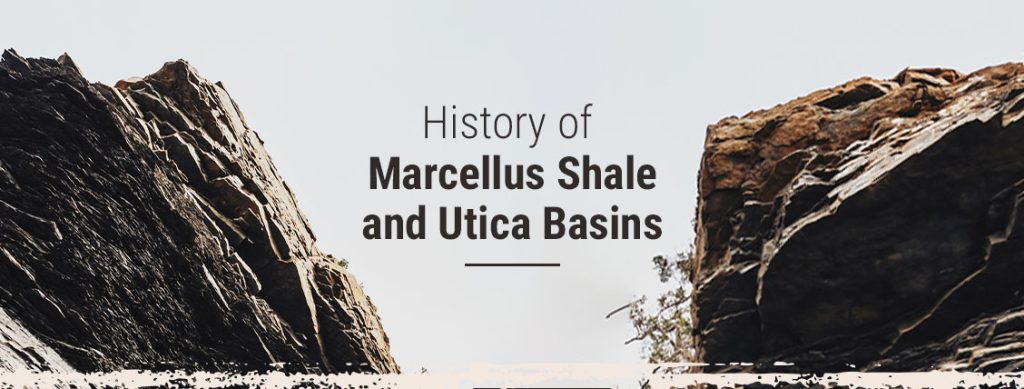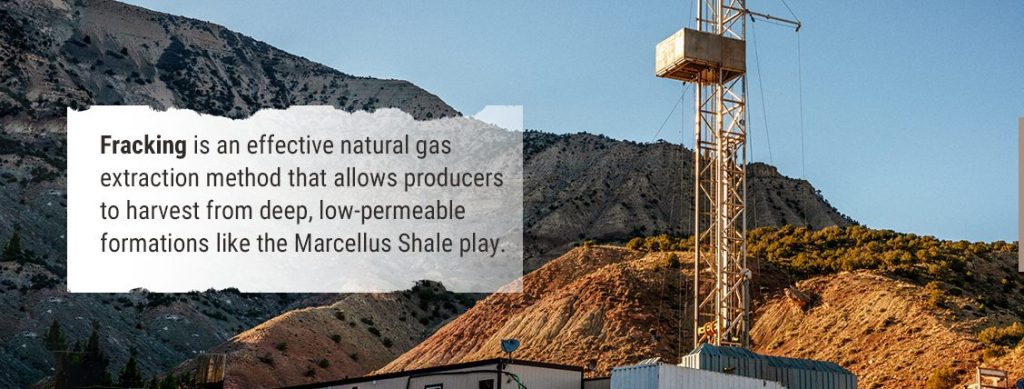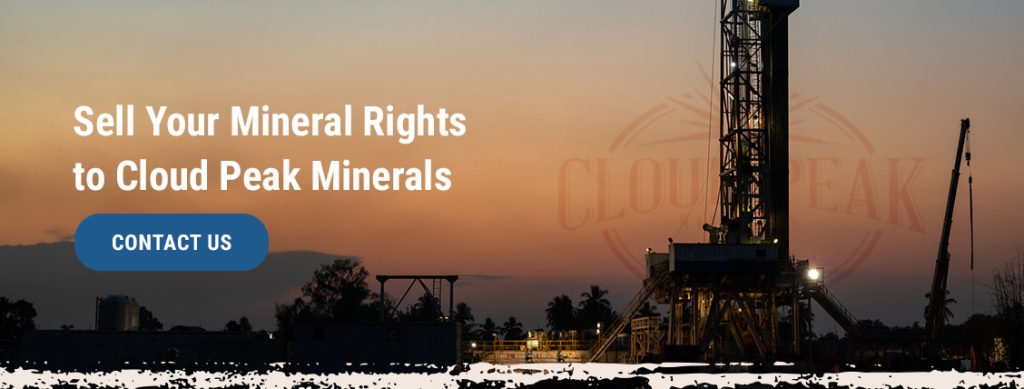
If you own mineral rights in Appalachia, you have likely heard about the Marcellus and Utica shale formations. With many large oil and gas companies purchasing mineral rights in the Appalachian Basin, selling your mineral rights can be incredibly beneficial.
Both shale formations have a fascinating history that plays directly into current events. Let’s explore how these rock formations came to be so we can better understand what’s going on.
What Is the Marcellus Shale Basin?
The Marcellus Shale Basin is a massive formation of shale that lies under much of the northern Appalachian region. It stretches approximately 90,000 miles across several states, including:
- Pennsylvania
- New York
- West Virginia
- Ohio
- Maryland
The formation is extremely deep under the Earth, over 9,000 feet down at its deepest points. Experts have predicted it could contain trillions of cubic feet of natural gas, which could be a massive boost to the United States’ energy independence.
For generations, oil and gas companies could do little more than drill low-yield wells into the Marcellus Shale play. The development of techniques like horizontal drilling and hydraulic fracturing — more commonly known as “fracking” — has opened the door for more extensive drilling.
History of the Marcellus Shale Basin
Paleontologists have determined that the Marcellus Shale Basin formed in the Middle Devonian period, about 390 million years ago. During this period, the Appalachian region was part of an enormous inland sea populated by primitive marine life.
Remains of dead animals and plants sank to the sea floor and built up over time, mixing with sediments from the surrounding land and fossilizing. As the continents shifted to their current positions, the tectonic plate collisions deep under the Earth deposited and compressed more layers atop the fossils, which created the enormous deposit of carbon-rich shale we have today.
What Is the Utica Shale Basin?
The Utica Shale is a black, organic-rich shale deposit that also exists in the Appalachian Basin. It lies even deeper than the Marcellus Shale, and it’s one of the largest natural gas production plays.
Experts at the U.S. Energy Information Administration estimate that both formations combined could produce 35,372 million standard cubic feet of natural gas per day.
Because companies looking to harvest from the Utica Shale play already have the infrastructure from previous exploration of the Marcellus formation, harvesting will be less costly.
History of the Utica Basin
The Utica formation is much older than the Marcellus — according to paleontologists, this basin formed approximately 488 to 443 million years ago during the Late Ordovician period.
Back then, most of the world north of the tropics was completely underwater, and most of the Earth’s aboveground land was part of the southern supercontinent Gondwana. As with the Marcellus Shale, organic matter sank to the bottom of the sea floor over time — after millions of years of extreme heat and pressure, a carbon-rich shale deposit formed. That deposit was the Utica Shale play.
The Utica Shale contains thousands of wells, making it a rich resource. Most drilling has taken place along the Ohio-Pennsylvania border and in Quebec’s St. Lawrence Lowlands, but fracking allows companies to reach deeper areas and harvest deeper basins.
What Is Fracking?

Fracking is an effective natural gas extraction method that allows producers to harvest from deep, low-permeable formations like the Marcellus Shale play. Here’s a quick overview of how it works:
- Drilling: The operator drills vertically until reaching the shale deposit, then directs the drill to move horizontally along the formation.
- Perforation: The operator lowers a perforating gun into the well, igniting explosive charges to create small holes along the horizontal drill line.
- Fracturing: Operators pump a pressurized mixture of water, sand and chemicals into the well, which travels into the small holes in the casing and cracks open the shale.
- Flowback: The injected water and chemicals flow back out of the well for treatment or disposal.
- Extraction: Natural gas flows from the shale’s pores up and out of the well, then travels to plants and consumers through pipelines.
While many variations of this technique exist in different geological regions, all use these same basic steps.
How to Sell Mineral Rights in Appalachia
Now that fracking and horizontal drilling have enabled companies to begin harvesting from these deep rock formations, mineral rights holders in Appalachia stand to gain a lot from selling their rights to oil and gas companies. Let’s briefly explore what mineral rights are and how they work.
What Are Mineral Rights?
In most states, real estate ownership can be split into mineral rights and surface rights. Here’s what those mean:
- Mineral rights: Holding mineral rights means you’re entitled to explore for and develop all subsurface minerals on your property, including hydrocarbons like oil and gas, and solids like coal.
- Surface rights: Holding surface rights entitles you to use the surface of the land as you see fit. For example, you can build a home or start a farm.
If you own mineral rights, that means you’re entitled to all the hydrocarbons and minerals under your property, including large shale deposits. Although a difficult market to navigate, you have the opportunity to sell all or a portion of your mineral rights to a third party.
Selling Your Mineral Rights
If you own mineral rights, you have total control over what you do with them. Even if you own less than 100% of a parcel with other family members or third parties owning the rest, you are permitted to lease or sell your portion of the interest. There are pros and cons to leasing vs selling, but for many individuals, the best option is to sell to a reliable mineral rights acquisition firm.
Selling your mineral rights means you can avoid paying hefty ongoing property and/or income taxes and reinvest in another asset class not exposed to volatile commodity prices. Look for a company that has a long list of satisfied customers in your state — the right firm will be able to navigate the legal nuances of your area while providing excellent customer service.

Sell Your Mineral Rights to Cloud Peak Minerals
If you believe selling your mineral rights is the best decision for your family, we at Cloud Peak Minerals are here to help you through the process. We stand firmly by our code of Cowboy Ethics, so when you work with us, you can expect full transparency, honesty and respect throughout the process.
Our in-house team of technical experts will perform a thorough valuation of your minerals to ensure you’re getting the best deal on the market. Because we cut out the middleman, our process is quick and hassle-free — unlike typical brokers, flippers and speculators, we’ll close a sale in 30 days.
Get the most out of your minerals. Contact us online today to request a free valuation, or give us a call at (307) 429-0093 for more information.
